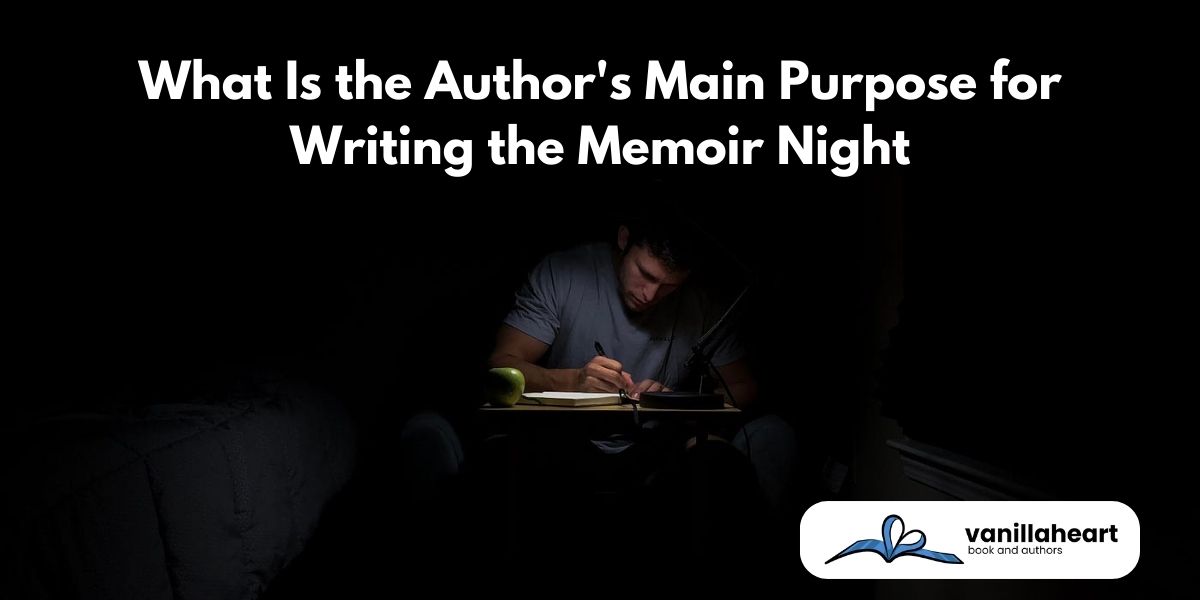
Autobiography
What Is an Autobiography?
Autobiography writing is when someone pens down their life story. It’s like creating a personal diary, but for everyone to read. In autobiography writing, the autobiography writers share their unique experiences and intimate memories. This type of writing allows the reader to see the author’s life and mind directly. It’s different from a biography, where another person tells your story. In an autobiography, it’s the person sharing their journey. It offers a special chance to step into their shoes and see the world from their eyes.
How to Write an Autobiography
Find Your Focus: Beginning to write an autobiography starts with finding what to focus on. Reflect on the parts of your life that mean the most to you. Maybe it’s about your childhood days, the peaks of your career, or how you’ve grown personally. This focus acts like a compass for your writing. It makes sure your autobiography centers on the stories you find most vital. Think of it as choosing the key chapters of your life’s book you want everyone to read.
1- Outline Your Life’s Timeline
2- Identify the Theme
Figuring out the theme is a crucial part of writing an autobiography. It’s like finding the heart of your story. What’s the big message or the most important lesson from your life? Maybe it’s about how you overcame tough times, the value of your family, or chasing your dreams. This theme adds more depth to your autobiography. It ties your various experiences together into a story that makes sense. A well-chosen theme can transform a simple list of life events into a powerful narrative that truly speaks to others.
3- Gather Memories
4- Be Honest and Reflective
Being honest and reflective is crucial when you write an autobiography. It’s not just about listing what happened in your life. You also need to think deeply about what these experiences mean to you. Being honest makes your story believable and trustworthy. At the same time, looking back thoughtfully lets you share the important lessons and understanding you’ve gained. This mix of honesty and reflection turns your autobiography into more than just a timeline of events. It becomes a deep dive into the essence of your life’s journey.
5- Include Influential People
In every life story, including when you write an autobiography, key figures leave a lasting impact. It’s important to acknowledge these individuals in your writing. They could be family members, friends, mentors, or even challengers who have shaped who you are. Discuss how these people have influenced your choices, beliefs, and personal growth. Including them in your autobiography adds depth, showing how our lives are often interwoven with others, shaping us thoughtfully.
6- Describe Settings Vividly
Bringing the places of your life to life is a crucial aspect when you write an autobiography. Vividly describe the settings where significant events of your life unfolded. It could be the house where you grew up, a school that was a big part of your life, or a city that left an indelible impression on you. Use your words to paint these places so that readers can see them in their minds. This level of detail makes your story more engaging and helps readers feel more connected to your journey.
7- Express Emotions
As you get on the journey to write an autobiography, being open about your emotions is key. Share your feelings during the big moments of your life, whether they were filled with joyous challenges or were transformational in some way. Your emotional honesty brings another dimension to your story, making it more gripping and easier for readers to relate to. Let your readers experience your happiness, struggles, excitement, or fears. Emotions are a universal language, and sharing yours adds richness and depth to your story.
8- Edit and Revise
Once you’ve written your story, the next vital step in your journey to write an autobiography is editing and revising. Take a critical look at your work, focusing on clarity and impact. Simplify complex sentences, making your language easy to grasp. Ensure your storytelling is consistent and flows smoothly. Editing isn’t just about fixing grammar; it’s about fine-tuning your narrative and capturing the essence of your experiences in the most compelling way possible.
9- Seek Feedback
As you walk the path of writing an autobiography, seeking feedback is incredibly beneficial. Share your drafts with people you trust, those who grasp the essence of your story. This could be family members, close friends, or a writing group. Pay attention to their constructive criticism. Their insights may provide fresh perspectives or reveal areas needing improvement. Remember that feedback is invaluable for refining your story, making it more engaging and authentic.
10- Incorporate Visuals
An excellent way to enrich your autobiography is by adding visuals. Include photographs, documents, or any relevant imagery that can add a personal touch to your narrative. These visuals serve as tangible evidence of your experiences, helping to illustrate your story. They allow readers to visually connect with the people and places you describe, making your account more relatable and vivid. When you write an autobiography, remember that pictures can convey volumes.
11- Finalize Your Manuscript
The final step in your journey to write an autobiography is to finalize your manuscript. Review your entire story, ensuring it flows well from start to finish. Pay special attention to your conclusion – it should be strong and reflective, leaving a lasting impression on your readers. It’s your chance to summarize your life’s lessons and experiences, offering wisdom or insights from your journey. A well-crafted conclusion ties your story together beautifully.
By following these steps, one can effectively make an autobiography that is both engaging and meaningful. Along with these tips, you can also look towards biography writing services if you need help throughout your writing journey.
6 Essential Elements of Autobiography
Honesty: When you set out to write an autobiography, being honest is key. Share your true story, the good and the bad. This honesty helps readers believe and connect with your journey, making it more real and relatable.
Detail
Detail is vital when you write an autobiography. Describe your experiences and events vividly. This brings your story to life, making it colorful and engaging for those who read it.
Chronology
A clear order of events is important when you write an autobiography. It helps readers follow your story easily, understanding how your past shaped who you are today. A logical flow makes your story clearer and easy to follow.
Theme
Your autobiography should have a central theme. This is the main message or lesson from your life. A strong theme ties your experiences together, making your story more meaningful and impactful for your readers.
Emotion
Sharing your feelings is essential when you write an autobiography. It lets readers connect with you on a deeper level. Your emotions make your story more powerful and touching, drawing readers into your world.
Reflection
Reflecting on your experiences is a key part of an autobiography. It shows how you’ve grown and what you’ve learned. This reflection adds depth to your story, offering valuable insights and lessons to your readers.
4 Examples of Autobiography
“The Story of My Experiments with Truth” by Mahatma Gandhi: Gandhi’s autobiography isn’t just a history. It’s a journey into his beliefs and actions. Gandhi shares insights into his life’s pivotal moments, starting with his childhood. He talks about his philosophy of nonviolence and truth. This book gives us a unique look into how Gandhi thought and lived.
Example 1: “Long Walk to Freedom” by Nelson Mandela
This is the story of Nelson Mandela, a man who changed the world. Mandela grew up in a small village. He later became a symbol of peace, spending 27 years in prison. His fight against apartheid in South Africa shows us the power of resilience and hope.
Example 2: “The Diary of a Young Girl” by Anne Frank
Anne Frank’s diary is a heart-rending account of World War II. She wrote it while hiding from the Nazis. Her words bring to life her fears and dreams. This diary is more than history. It’s a powerful reminder of courage in the face of danger.
Example 3: “I Know Why the Caged Bird Sings” by Maya Angelou
Maya Angelou’s story is about overcoming. She faced racism and personal hardships in her early years. Her book tells how she found her voice against all odds. Angelou’s rich and expressive writing makes her experiences come alive. It’s an inspiring tale of empowerment.
Example 4: “Dreams from My Father” by Barack Obama
Before becoming president, Barack Obama wrote about his life. He talks about his diverse background and finding his identity. The book covers his early work and initial steps into politics. It offers a glimpse into the experiences that shaped his leadership. Obama’s story is about growth and understanding.
Conclusion:
The journey to write an autobiography is not just about recording events; it’s about sharing the essence of your life story with the world. It’s a process of self-examination, discovery, and creation. Remember, your story is unique; only you can tell it with the depth and authenticity it deserves. Whether you write a biography or an autobiography, the key is to stay true to your experiences and the lessons they have taught you.


